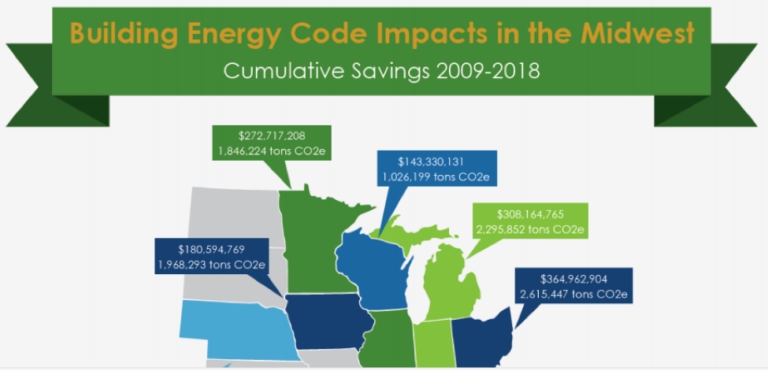A very simple way to save money on your utility bill is to use less energy in the first place. It can be difficult, however, to change one’s habits around energy use. That is why efficiency upgrades to living environments—better insulation to keep the house airtight, high-performance windows that maximize sunlight in winter and minimize it in summer, “smart” controls for lighting and appliances, to name a few examples—are so effective. They are “set it and forget it” ways to passively reduce energy consumption.
In 2021 Michigan regulators are updating the model energy conservation codes that set standards for new buildings, including minimum insulation requirements, standards for testing ducts for leakage, whether there should be lighting controls or not and much, much more. Our friends over at the Michigan Environmental Council recently held a webinar with a wealth of information about exactly what these building codes represent and how they can save hundreds of millions of dollars for Michigan consumers. Watch a recording of the webinar here.
The International Energy Conservation Code (IECC) is a model code established by the International Code Council and then adopted by states and, in some cases, localities. The council updates the IECC every three years, and Michigan can choose to adopt the latest code or wait an additional three years. Michigan is still on the 2015 IECC so it is currently at the end of the six-year cycle and this year will adopt the 2021 or 2018 versions. Exactly which codes the Michigan Department of Licensing and Regulatory Affairs selects would make a huge difference in the extent to which new buildings must be energy-efficient, and as a result, a big impact on Michigan energy consumers in several different areas that we have discussed before.
In the debate about the future of the Upper Peninsula’s energy supply, we have recently seen the extent to which energy is so expensive for customers in that region due to inefficient housing stock, and how better efficiency in the UP could save utilities and ratepayers millions of dollars. In addition, lower-income residents spent a disproportionately high amount of their budgets on energy costs in great part because they tend to live in older, less-efficient housing stock that is expensive to power, heat and cool. Building new affordable housing that is up to a higher energy efficiency standard than existing stock would help address these inequities in energy burden.
“For citizens, energy codes can save money by reducing energy bills, which is critically important for those on limited income,” Diana Burk, project manager at New Buildings Institute (NBI), said during the webinar, “30% of Detroit households have a high energy burden, which means 6% of income goes toward utility bills. Paying utility bills is the most common reason people use short-term loan products, and as many as 31% of Americans have gone without a meal or prescription to pay a bill.”
NBI supports the 2021 version of the code. Burk estimated that the 2021 version is about 10% more efficient than the 2018 version. Get lots of background about this issue by watching the recording of the webinar.

